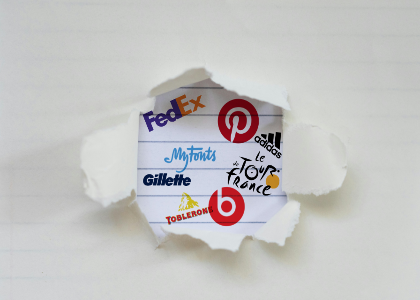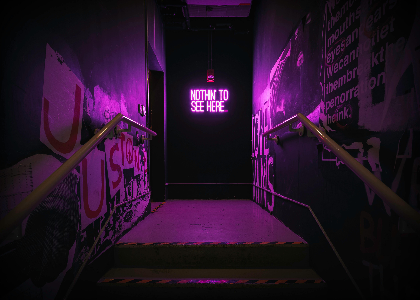Blog

Logo or Website: Which Should You Have First?
Where do you begin when you've got an idea and want to start a business? Before you order your business cards, it's essential to take the time to do some market research to see if your product or service is viable. Next, what's more important, a logo or a website? Which should you have first? Let's take a closer look.
Which is better: a logo or a website first?
We know you probably want to do things in order and avoid making mistakes. So, once you've done your market research and analyzed your target clientele, what should your next priority be? Should you put your efforts into creating a logo or a website?
While these two components are essential for any company, we think it's best to start with a logo, or more precisely, a brand image. In fact, a complete, personalized, and well-thought-out brand image will enable you to build your website even more easily. It makes sense too because your logo will be in different places on your website. Momir Gataric, owner of Veza Reception, agrees with this approach, noting: “Your logo and brand identity serve as the foundation of your business's visual communication. It helps create a cohesive design language that extends to your website, marketing materials, and more. Without it, a website can feel directionless and fragmented. That’s why establishing your brand image first ensures everything else falls into place smoothly.”
What visual components should I have before creating a website?
Your logo remains the heart of your brand image, but it's not the only visual component associated with your company. If you precisely define all the parts of your brand, you'll be able to create a website that reflects your image while maintaining a certain cohesion.
Even before creating your logo, it's vital to have an idea of your desired style and target clientele. If necessary, write down adjectives that describe what you have in mind for your company.
The first visual component to consider is the color palette. Colors are powerful allies in helping you convey a specific emotion or message. The same palette should be used for your logo and website.
Then there's the font or fonts. Typographic fonts can also help you define a specific look for your brand. Some fonts can help you achieve a serious, traditional, or upscale look, while others are modern, playful, and friendly.
Finally, there's the logo and its various versions. Obviously, the style, colors, and fonts defined above should be used. Don't hesitate to have different variations, such as a version without text, simplified or in black and white to increase versatility. You should be able to use your logo everywhere, whatever the medium.
Whether it's your values, logo versions, color palette or fonts, don't forget to write down all the important information in a brand guide. This will come in very handy when it's time to create the structure of your site. Without a defined logo and brand image, it will be difficult to build a coherent site.
Reminder: Where to use your logo on a website
Now that you know it's best to have a logo before you start creating a website, where should you use your symbol? Obviously, you can display it wherever you like, but here are three places where your logo should be on your site.
Here's a little tip: to avoid having a blurred logo or a non-transparent background, we strongly recommend you opt for a PNG or vector format when using your logo on a website. JPG format, on the other hand, is best for images and photos.
In the header
The first place your logo should appear is in the header of your site. Whether you create a signature or a combined logo, this should be among the first visual components visitors see. You can display it in the center or top left-hand corner, as you prefer.
In the footer
Next, it is a good idea to consider using your logo in the footer, as a reminder. You may decide to use a slightly different or simplified version. For example, if your footer has a dark or colored background, you could opt for a black or white version.
Favicon
Finally, there's the Favicon. The Favicon is a small icon that represents your site on the web, both on search engines and tabs. All major sites have a personalized Favicon.
As this icon is tiny, your regular logo may not look its best as a Favicon. You could therefore opt for a simplified version. Remove all the details and keep only the essential components. For example, Facebook kept only the letter F on a blue background for their Favicon. Most files are accepted for the Favicon but bear in mind that you'll need a PNG or vector image if you want a transparent background.
In conclusion, there are many steps to follow when starting a business, even if you have the idea of the century. So, take the time to think things through to increase your chances of success. After you've thought about the legalities and the various analyses, define the visual universe of your brand, then create your logo. Then it's time to start building your website and your online presence.
If you need a helping hand, take a look at our blog posts for tips on logo creation and branding. We wish you every success!
More tips and tricks on the blog


